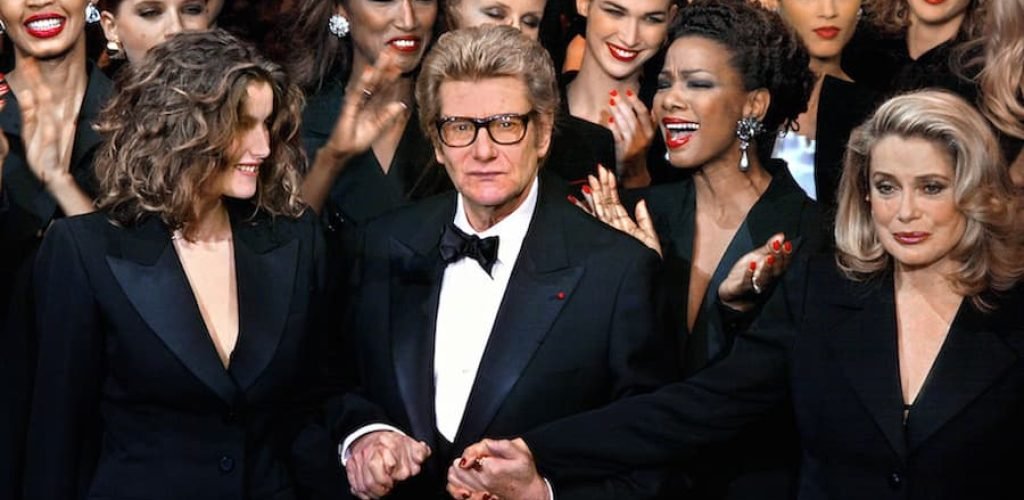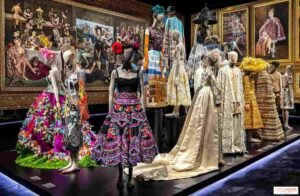Few designers have reshaped the cultural and social fabric of fashion as profoundly as Yves Saint Laurent. More than a couturier, he was a revolutionary—an artist who understood that clothing could be a vehicle for freedom, self-expression 💃, and even political commentary.and even political commentary.
Breaking Boundaries from the Start 🚀
When Saint Laurent took the reins at Dior in 1957, he was just 21. His early collections already challenged conventions: softer lines, a new ease, and a willingness to draw from street style and youth culture—radical for the world of haute couture.
In 1961, he founded his own maison with Pierre Bergé, creating a label that would push boundaries for decades. He wasn’t simply making clothes; he was proposing a new way of living in fashion.
The Tuxedo for Women: A Manifesto in Black 🖤
Perhaps nothing symbolizes Yves Saint Laurent’s impact better than Le Smoking, introduced in 1966. At a time when women wearing trousers in public could be refused entry to restaurants, the tuxedo was more than a garment—it was a social statement ✨.
It gave women authority, allure, and confidence long reserved for men, without stripping away femininity. His genius lay in fusing masculine tailoring with feminine elegance, proving that power dressing could be profoundly stylish.
Art, Culture, and Subversion 🎨
Saint Laurent drew inspiration from art and global cultures with fearless eclecticism. His Mondrian dresses of 1965 turned modernist painting into wearable art.
Collections also incorporated Russian folklore, African patterns, Moroccan caftans, and the bohemian streets of Paris 🏙️. He was one of the first designers to cast models of diverse ethnic backgrounds, quietly challenging the Eurocentric norms of fashion in the 1960s and 70s.
Ready-to-Wear as Liberation 👚
In 1966, Saint Laurent launched Rive Gauche, a ready-to-wear line that democratized high fashion. This move scandalized some in the couture establishment but opened the doors of luxury fashion to a younger, broader clientele.
The boutiques became cultural hubs—places where women could buy cutting-edge fashion without an appointment or society pedigree.
Legacy of a Revolutionary 🌟
Yves Saint Laurent’s influence extends far beyond his lifetime. The language of modern fashion—gender-fluid silhouettes, art-inspired collections, and cultural crossover—owes much to his vision.
He believed fashion should empower, not constrain, and his legacy of style, liberation, and identity remains more relevant than ever.
“What’s important in fashion is to make clothes that people will wear. Fashion that is not worn is not fashion.” – Yves Saint Laurent
For YSL, clothing was never just about style. It was about identity 🆔, freedom 🕊️, and the quiet—or sometimes bold—power of change ⚡.






